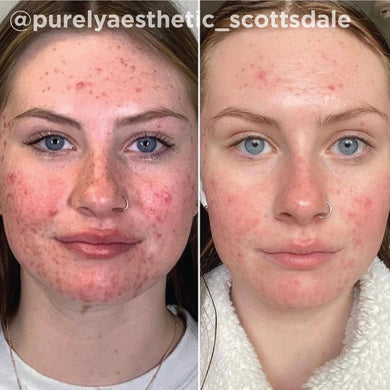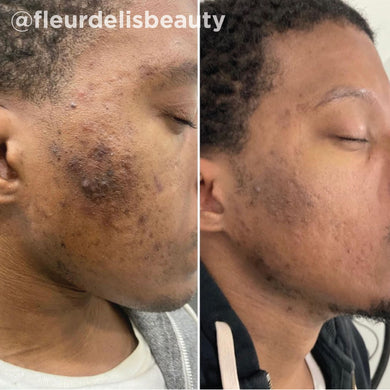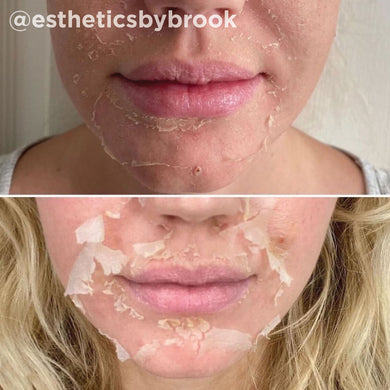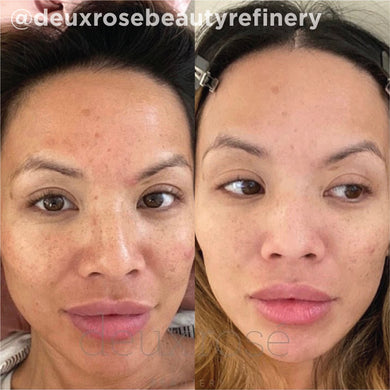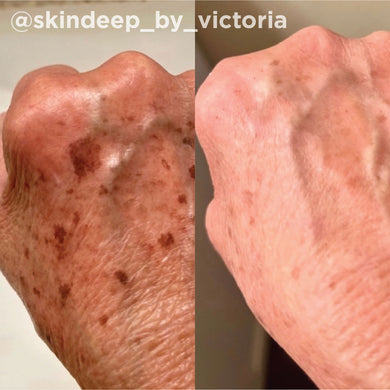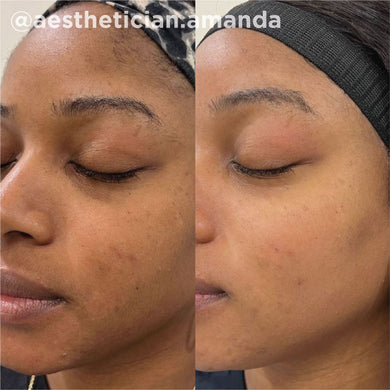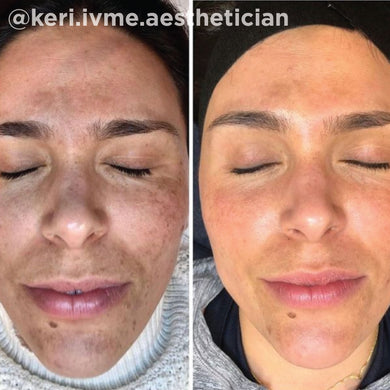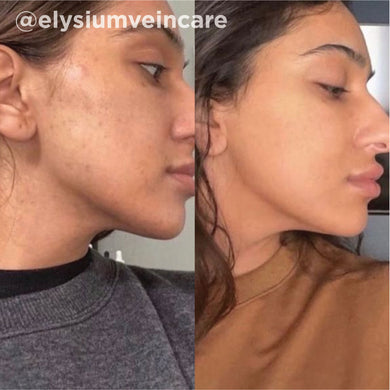Acne Scaring - Skin of Color
Written by Corey L. Hartman M.D., FAAD as part of The Brown Skin Agenda Initiative.
Acne. As if its unpredictable breakouts, blackheads, whiteheads, and cysts weren’t enough, people of color are often presented with an issue that can last long after the breakout clears. Scarring and hyperpigmentation are more apparent, more significant, and more difficult to treat in patients with darker skin tones. As a board-certified dermatologist, Vitality Institute’s The Brown Skin Agenda inaugural board member, and founder and medical director of Skin Wellness Dermatology in Birmingham, Alabama, I’ve treated my fair share of patients of color who struggle with acne and the effects it may leave behind. I’m here to answer all your questions about acne, acne scarring, and the treatments that are safe and effective for skin of color.
The Golden Rule of Preventing Acne & Acne Scarring
Like most things, an ounce of prevention is worth a pound of cure. The best way to prevent scarring from acne is to aggressively treat acne with topical medications and safe procedures. Whether it’s your first bout of teenage acne or you’re experiencing adult acne, keeping oils balanced, and exfoliating away dead skin cells and debris will keep skin free of triggers that cause acne.
But what about acne scarring? The true golden rule of deterring acne scarring, regardless of skin type and tone, is to leave it alone. Don’t pick, poke, or pop blemishes. While darker-skinned patients typically experience the same types of acne symptoms as those with lighter skin tones, the problem with acne in patients with darker skin is that the inflammation from the acne causes bigger problems once it resolves. That bigger problem is called post-inflammatory hyperpigmentation, aka PIH, aka dark spots, aka uneven skin tone.
Melanin (or what gives your skin color) is great in that it protects the skin against UV Damage (Sun Damage) and premature aging. However, excess melanin production, which presents itself as dark spots or hyperpigmentation, can often be triggered or exacerbated by UV Light, as well as any trauma or injury to the skin. Unfortunately, the body sees acne and the inflammation it causes as an injury, which can trigger an excess production of melanin, leading to the unwanted pigmentary side effects on darker skin. This inflammation can be further exasperated by premature popping or picking and, as melanin-rich skin heals, can turn into stubborn hyperpigmentation that presents as a brown or purplish scar.
Safe and Not-So-Safe Treatments for Acne and Acne Scarring on Skin of Color
There are a wide range of professional-grade treatments available that target acne, scarring, and hyperpigmentation and act as a triple-threat method to reduce bacteria, stabilize oil production, and reduce inflammation. However, it takes the right formulation, a skilled hand, and a trained eye to discern how much is appropriate and what limits to set on the treatments. Many of the common procedures that dermatologists and skincare experts use to treat scarring and hyperpigmentation must be used with caution for fear of exacerbating the hyperpigmentation and risking adding additional inflammation to already compromised skin.
I’m often asked which treatments aren’t recommended for patients with darker skin tones. This would be deep chemical peels (like phenol peels), IPL (intense pulse light) laser treatments, and BBL (BroadBand Light) laser treatments, which should never be used on darker skin tones.
And which treatments are safe for treating acne and scarring in patients with darker skin tones? My go-to treatment that is effective at treating both active acne and the scarring that it leaves behind are medium-depth chemical peels like the VI Peel, which are safe for all skin types and tones. In addition, certain non-ablative lasers and microneedling are all safe and effective to treat scarring and hyperpigmentation in patients with darker skin tones. Make sure to consult a physician or dermatologist that is adept at treating skin of color for a regimen that is custom to you.
Skin type should also be considered when undergoing chemical peels, as it is not one-size-fits-all. There are a variety of different medium-depth chemical peel formulations with different ingredient blends that suit different skin types. For example, I recommend VI Peel Purify to clear any type of active acne, VI Peel Advanced for acne scarring and pitting on drier skin, and VI Peel Purify with Precision Plus for acne and scarring on oily skin. And don’t rule out chemical peels just because you’re prone to sensitivity. The VI Peel Original is great for sensitive skin.
Home Is Where Healthy Skin Begins
Targeting post-acne scars is a partnership between you and your dermatologist. Pre- and post-treatment procedures done at home can level up the success of in-office chemical peels. I tell my patients that in-office procedures are like buying a car, and the at-home regimen is like changing the oil. The at-home regimen is vitally important to ensuring the success of chemical peels. A key player in evening skin tone and fading stubborn scars is the VI Derm Dark Spot Lifting Serum with 5% Tranexamic Acid. It’s my go-to at-home option for treating discoloration from acne breakouts and to maintain an even skin tone, for any skin color.
Corey L. Hartman M.D., FAAD
Corey L. Hartman, MD, is the founder and medical director of Skin Wellness Dermatology in Birmingham, Alabama. In addition, he is Assistant Clinical Professor of Dermatology at the University of Alabama School of Medicine. A native of New Orleans, Dr. Hartman attended Emory University, graduating with a Bachelor of Arts in Psychology. After earning a doctorate of medicine from Meharry Medical College in Nashville, Tennessee, he completed an internship in Internal Medicine at Tulane University Medical Center and a residency in Dermatology at the University of Alabama School of Medicine. Dr. Hartman is certified by the American Board of Dermatology and is a fellow of the American Academy of Dermatology and the American Society for Dermatologic Surgery.
Dr. Hartman has a special interest in Dermatologic Surgery, Injectables, Hair Restoration, and Laser Dermatology. He frequently speaks on cosmetic procedures and social media marketing in dermatology at meetings around the country. Dr. Hartman was voted 2016 Best of Birmingham: Dermatologist by the readers of Birmingham Magazine and the 2018 Best Dermatologist by the readers of About Town Magazine. Most recently, in 2020, Dr. Hartman was named physician spokesman and brand ambassador for iconic Old Spice’s skin care lines for men. He also serves on the Advisory Boards for Men’s Health Magazine, Allergan Aesthetics, Galderma Aesthetics, and Revision Skin Care. Most recently, Dr. Hartman was named to the Board of Directors of the Skin of Color Society.
